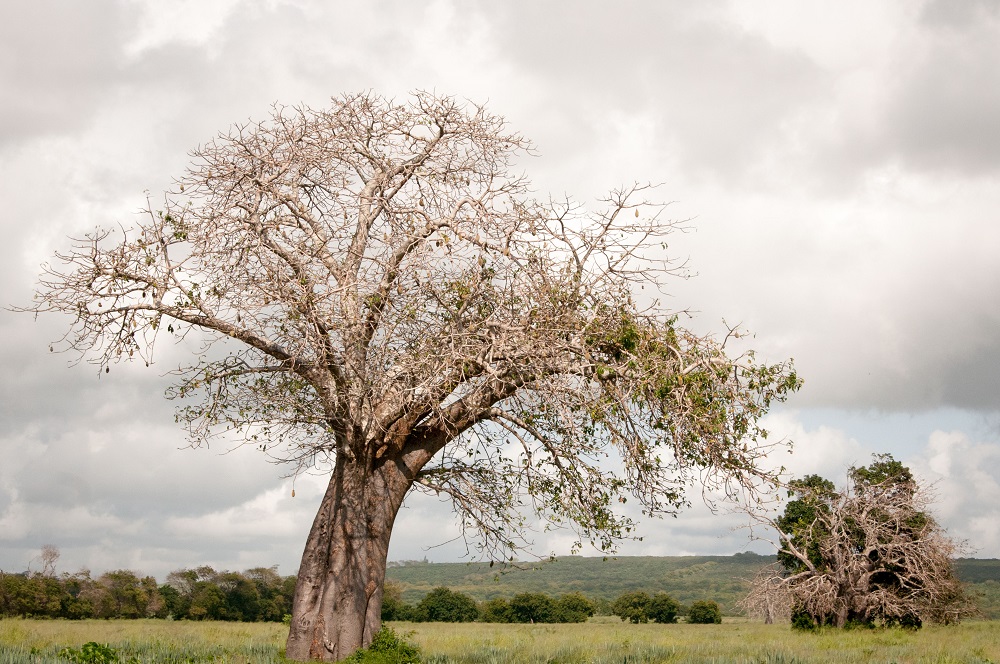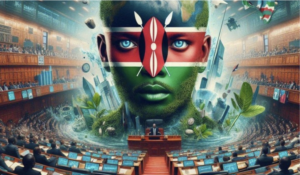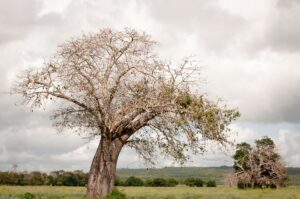Author: Amelia Mills
For the first time on record, global warming has exceeded the 1.5°C temperature threshold set by the 2015 Paris Climate Agreement. While this is not a permanent breach of the agreement (for which the threshold is measured over decades), it is still a marked step in the wrong direction. With climate change-driven weather phenomena projected to grow increasingly worse, Africa, although having contributed the least to this temperature change, is one of the regions most vulnerable to the effects of it. Under climate scenarios above 1.5°C, Africa faces potentially irreparable damage to its economies, infrastructure, and health, water, and food systems. In short, the importance of acting now cannot be exaggerated.
One of the seemingly obvious ways of mitigating the effects of climate change is to let nature do the work. Terrestrial and marine ecosystems play an essential role in regulating climate, absorbing CO2 emissions, acting as buffers against extreme weather events, and preventing slower landscape degradation such as coastal erosion or desertification. On top of this, the European Commission showed in 2009 that ecosystem-based approaches are a cost-effective and accessible way to tackle rural poverty. However according to the OECD, despite the benefits they offer, the cover of and biodiversity within much of the world’s ecosystems continue to decline. A report by UNEP in 2021 showed that repairing ecosystems and implementing nature-based solutions could contribute over a third of the climate mitigation needed by 2030. As we move further into the UN Decade on Ecosystem Restoration, it is time to see what progress has been made so far, and what still needs to be done.
Broadly, reviews of National Determined Contributions (NDCs) of African countries show a prioritisation of adaption measures over mitigation ones. Adaption measures are geared largely towards agriculture, followed by the water sector and disaster risk management. Mitigation actions, which include ecosystem restoration, are found to a lesser extent, in the energy, conservation, transport, waste management and agricultural sectors. Most African countries have committed to achieving biodiversity targets, including the Aichi Biodiversity targets. These targets receive varying levels of success – for example, while awareness of biodiversity (Aichi target 1) has grown, evidence of a reduction in pressure on vulnerable ecosystems (Aichi target 10) is lacking. As much as 65% of productive land in Africa is affected by degradation, and the rate of deforestation on the continent continues to increase.
While many governmental targets remain effected only on paper, it is important to note the local success stories as well. Two such stories are found in Kenya and Malawi respectively.
Along the Kenyan coastline, marine environments often suffer degradation through overfishing, fish and coral collection for the aquarium trade, and climate change. Concerned, members of the Kuruwitu community in Kilifi set up the Kuruwitu Conservation and Welfare Association (KCWA) in 2003 and later, in 2006, denominated a 30-hectare Marine Protected Area (MPA). Several community members who had previously fished in this area became rangers, patrolling the area to ensure sustainable fishing practices. Those that remained fishermen benefit from the spillover from the reserve. I visited this site in 2017 and 2023, and, while it is still on the mend, the area is vastly different from unprotected coastlines further up and down the coastline. Fish are bigger and more numerous, and the coral restoration project in place is slowly, but steadily, contributing to improved ecosystem function. This program is also notable for its involvement of women. While men conduct the majority of fishing operations, women make up a significant proportion of fishmongers. As such, at least one-third of the KCWA committee members are required to be women, and at each of the six landing sites, one of the two chairpersons has to be a woman. Other KCWA projects, such as a beach cleaning programme, also employ women.
In Malawi, more than 95% of the population uses wood or charcoal for cooking. This puts a significant strain on natural forests, contributing to the country’s alarming rate of deforestation. Ripple Africa’s Changy Changu Moto stove aims to combat this by reducing the demand for fuel wood. Furthermore, it reduces the occurrence of respiratory issues and burns associated with open-fire cooking in women and children, who spend much of their day inside homes. It also allows women to use the time they would usually spend gathering wood elsewhere, for example, in pursuit of other educational or economic activities. Programs like this that are targeted to improving the lives of women, while reducing ecosystem degradation, are fundamental to increasing resilience to changing climates, both environmental and economic.
These stories demonstrate Africa’s potential to slow or turn around ecosystem degradation by favouring nature-based solutions. However, economic development in Africa is still largely driven by natural resources. While there is an urgent need to reduce unregulated land cover changes and ecosystem exploitation to combat climate change, ensuring that communities still benefit through the sustainable use of natural assets is also important. Nurturing such ecological practices requires an orchestrated effort from governments, the private sector, international actors, and communities themselves. Integrating women into these programmes has been shown to not only improve their ecological success but also support the livelihood activities of both women and men across Africa.







